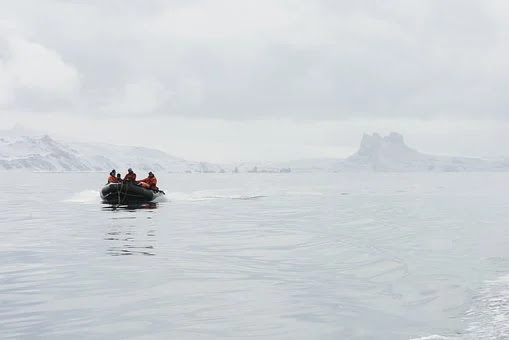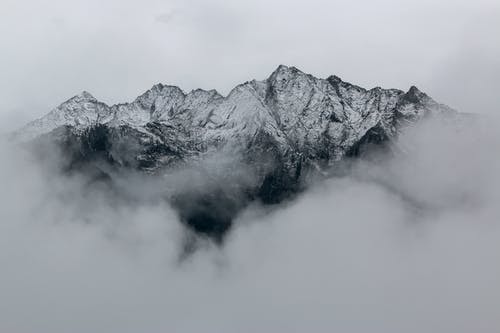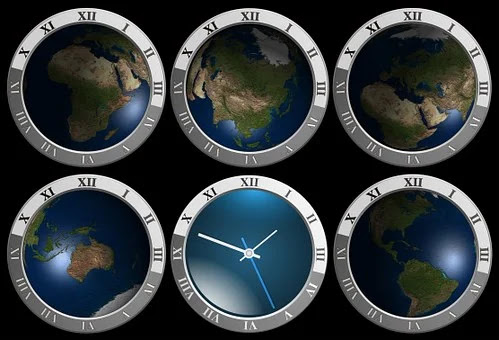There
may be some small secrets in different corners of the world, even in some
seemingly remote places, and places that are difficult for humans to reach,
such as Antarctica. This time, let the editor bring you 6 interesting and
mysterious facts about Antarctica.
1. The lake under the ice
 |
| Land of Antarctica |
When you think of Antarctica as a whole, you can easily
instinctively believe that land is just ice. And no more, no less, just
ice. However, after a rigorous study of this continent, people found that
there is indeed a body of water in the ice and snow in this area, which seems
unbelievable. It turns out that they are real lakes and even
rivers. For example, Lake Vostok, this freshwater lake is located 4000
meters below the ice layer. There is a view that it is actually a lake
formed by the melting of the ice above it under the condition of heating deep
in the heart of the earth.
2. The mysterious structure on the map
 |
structure on the map of Antarctica |
Google Earth is a kind of revelation to some extent,
people from all over the earth can explore the earth from a sky setting,
thereby revealing things that have not been noticed before. When viewing
Antarctica through a map, I found a fuzzy part on it. This part was so big
that he felt that it could not be anything other than a huge building. It
is approximately 25 kilometers by 7 kilometers in size. When the man
searched the entire Antarctica, he found nothing similar around him.
3. Slender
skull?
 |
Slender skull in Antarctica |
A team of archaeologists from the Smithsonian Museum
claimed that they discovered a set of three elongated skulls during an
excavation in Antarctica. This discovery seems to be very important for
many reasons, the most important of which is that it will prove the existence
of humanoid life on the pre-modern continent. Of course, most scientists
today think all this is a scam. However, slender skulls have indeed been
found in many parts of the world, but research tells us that this slender skull
was deliberately done by a unique human race in the past. They began to
use cloth strips around the head to change the shape of the skull when the
child was very young.
4. Blood Falls
 |
| Taylor Glacier of Antarctica |
This very unique waterfall flows from a glacier in
Antarctica. It happens to be a red waterfall, so it is called "Blood
Falls". But this is not real blood. This glacier is Taylor
Glacier. From a scientific point of view, the reason for its red color is quite
simple. This bloody huge waterfall was about 3 million years ago. When a seawater
lake was effectively covered by a huge glacier, it effectively preserved the
microorganisms living in the water and made the water rich in iron. Now,
in the past 100 years, fishermen have begun to dig holes in the glacier in
order to catch some perch and some cold cod. As time passed, the water
crawled out of the cave and began to flow down to the sea. However,
because it is rich in iron, once the water encounters fresh air, it will turn
into a terrible blood red like something flowing through your blood
vessels.
5.
 |
| Mountains in Antarctica |
Mountains are an important part of our world, but
although the peaks of many mountains may be covered by snow, you would not
expect them to be completely buried by snow. However, this is exactly the
situation in the Gamburtsev Mountains in Antarctica. This mountain range is
obviously very old, with a history of hundreds of millions of years. Some
people even say that it has a history of billions of years, but even so, they
are still buried under several kilometers of snow.
6. The secret base in Germany?
Like many continents, Antarctica has many myths and legends about certain things. One of the most mysterious is the legend. During the Second World War, Hitler sent people to build a base in Antarctica. Hitler sent expeditions to this frozen continent to conduct scientific research to make Germany a self-sufficient country. In 1938, under the leadership of Germany's third Antarctic expedition, a group of Nazi soldiers led by Alfredricher was ordered to explore the Antarctic in order to find a suitable whaling station to increase German fat production. Whale oil was one of the most important raw materials for the production of margarine and soap at the time. However, according to newspaper reports at the time, a year later, the Royal Navy discovered the "secret Nazi hideout" left behind after the mission.
7. No specific time zone
 |
| meridians in Antarctica |
All the meridians converge in Antarctica, so
any time zone can be used in Antarctica. Although choosing a time zone
sounds exciting, it can be quite confusing. But no one lives permanently
in Antarctica, so this is not a big problem. However, scientists and other
researchers can choose the time zone that best suits them during this part of
the southern hemisphere.
8. In the Greek root “Arctic” means “ the land of beers” and “Antarctic” means “land without beers”
"Antarctica" literally means the opposite
of "Arctic", so Antarctica can be called "a land without
bears". However, the word "bear" does not refer to the
polar bear, but to the constellations-Ursa Major and Ursa Minor. These
constellations are part of ancient Greek mythology and can only be seen in the
northern hemisphere. Therefore, Antarctica is called the "Bear-Free
Land". Interestingly, polar bears do not exist in Antarctica, they
only live in the Arctic.
9. You have to remove your wisdom tooth
 |
| winter in Antarctica |
In Antarctica in summer, about 1,000 to 1,500
people stay here. Most of them are scientific expedition personnel, while
others are support personnel and explorers. Although summer here is not
comfortable at all, the situation in winter is even worse. Except for a
few support staff and long-term scientific research personnel, most tourists
will leave this place. However, if you choose to spend the winter in
Antarctica, you will have to remove your wisdom teeth and
appendix. Because of the harsh winter environment, surgery cannot be performed. Even
if you plan to be a doctor in Antarctica, you must have your appendix removed
before going there.
10. Layer of ice between 1 mile to 2.96 miles thick:
Almost the entire Antarctic continent is
covered by ice and snow, and the thick ice layer makes the Antarctic region the
most difficult place to survive. More than 90% of the world's ice (about
29 million cubic kilometers) is frozen in Antarctica. Moreover, if all the
ice in Antarctica melts, the sea level will rise by nearly 60 meters.





0 Comments